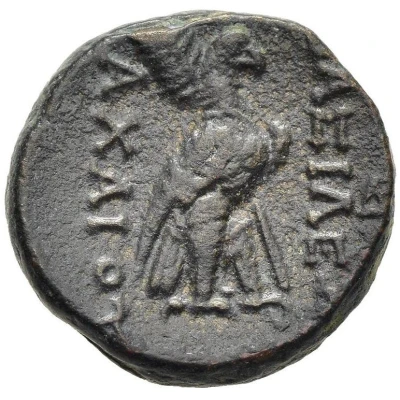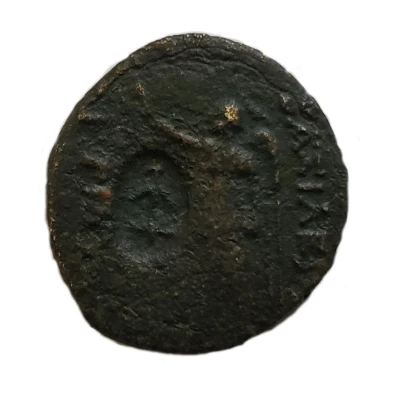


© Classical Numismatic Group, Inc.
Dichalkon Seleuceia ad Calycadnum 200 BC - 100 BC
| Bronze | 8 g | 20 mm |
| Issuer | Seleucid Empire (Seleucid Empire (305 BC - 64 BC)) |
|---|---|
| Type | Standard circulation coin |
| Years | 200 BC - 100 BC |
| Value | Dichalkon (1⁄24) |
| Currency | Drachm |
| Composition | Bronze |
| Weight | 8 g |
| Diameter | 20 mm |
| Shape | Round (irregular) |
| Technique | Hammered |
| Orientation | Variable alignment ↺ |
| Demonetized | Yes |
| Updated | 2024-10-10 |
| Numista | N#382264 |
|---|---|
| Rarity index | 97% |
Reverse
Text around, AΘH over AΘH in left field, Nike walking left, holding wreath and palm branch.
Script: Greek
Lettering: ΣEΛEYKEΩN TΩN ΠΡOΣ TΩI KAΛYKAΔNΩI
Translation: Seleucia ad Calycadnos
Comment
This city was part of the shrinking Seleucid Empire ending during Sulla and Pompey's conquests of Anatolia, extinguishing it in 63BC.
https://en.wikipedia.org/wiki/Seleucid_Empire
Interesting fact
One interesting fact about the Dichalkon coin is that it features a unique blend of Greek and Persian design elements, reflecting the cultural exchange and syncretism that characterized the Seleucid Empire. The obverse of the coin depicts a Greek-style portrait of the Seleucid king, while the reverse features a Persian-style image of a mythical creature, such as a griffin or a sphinx. This fusion of artistic styles is a testament to the diverse cultural influences that shaped the Seleucid Empire, which spanned from Greece to India during its height.



